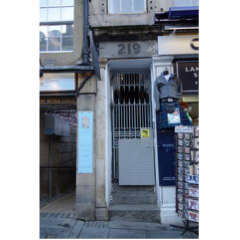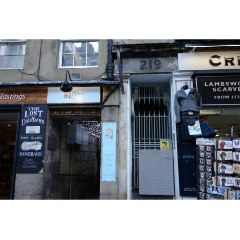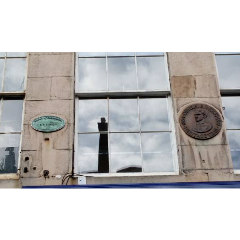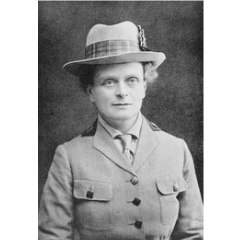
219 High Street today
219 High Street, Edinburgh, EH1 1PE
On this site, in 1904, Dr Elsie Inglis opened a hospital for women and children, known as The Hospice, and run only by women. Dr Inglis began her study of medicine in 1886, not long after women were first allowed to study the subject, at the Edinburgh School of Medicine for Women, under the tutelage of Dr Sophia Jex-Blake. While at the School, Elsie helped found the Scottish Association for the Medical Education for Women. As well as being a pioneer in maternal care and a prominent suffragist, Elsie sat on the governing board of the Edinburgh Charities Organisations Council, under which name the Association for Improving the Conditions of the Poor was then known, and organised a series of lectures for health visitors and also for mothers. When the First World War was declared in 1914, Elsie was almost 50 and unwell. She offered her services as a surgeon to the War Office only to be told ‘my good lady, go home and sit still.’ Dr Inglis refused to sit still, however, and instead came up with the idea for the Scottish Women’s Hospitals, which went out to France as well as to Serbia to help the soldiers there. In 1916, Inglis become the first woman to receive the Order of the White Eagle, the highest honour Serbia could bestow.

219 High Street today

Plaques on wall at 219 High Street

The Hospice in the High Street – from Elsie Inglis by Eva Shaw McLaren, 1920

Portrait of Dr Elsie Inglis
Photo credits: Lucy Ridley, Ema Smekalova, The History Company, Wellcome Collection









